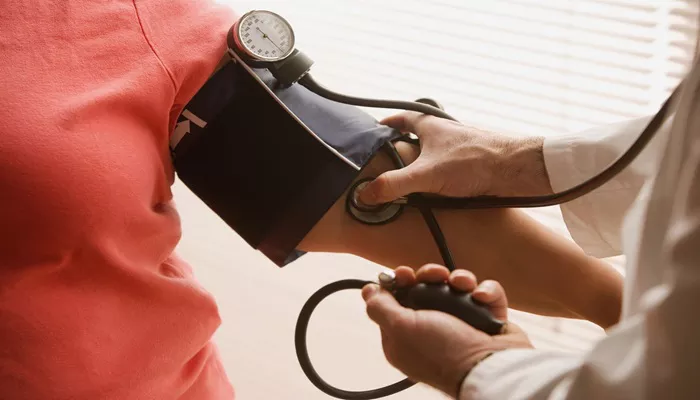High blood pressure, also known as hypertension, is a significant risk factor for cardiovascular diseases and other health complications. Blood pressure is measured in millimeters of mercury (mmHg) and is recorded with two numbers: the top number (systolic pressure) and the bottom number (diastolic pressure). The systolic pressure measures the force of blood against the artery walls when the heart beats, while the diastolic pressure measures this force when the heart rests between beats.
A high bottom number, or diastolic pressure, indicates that the arteries are under more stress than they should be during the resting phase of the heart cycle. Lowering this number is crucial for reducing the risk of heart disease, stroke, and kidney damage. This comprehensive guide explores various strategies and lifestyle changes that can effectively lower the bottom number in blood pressure.
Hypertension Is Classified Into Several Stages:
Stage 1 Hypertension: Diastolic pressure between 80-89 mmHg.
Stage 2 Hypertension: Diastolic pressure 90 mmHg or higher.
Managing and reducing diastolic pressure is vital for maintaining cardiovascular health and preventing long-term complications.
Lifestyle Changes to Lower Diastolic Blood Pressure
Adopt a Heart-Healthy Diet
Reduce Sodium Intake: Excessive salt consumption can lead to increased blood pressure. Aim to reduce sodium intake to less than 2,300 mg per day, or ideally 1,500 mg for those with high blood pressure.
Increase Potassium and Magnesium: Foods rich in potassium and magnesium, such as bananas, avocados, and leafy greens, can help relax blood vessels and lower blood pressure.
Follow the DASH Diet: The Dietary Approaches to Stop Hypertension (DASH) diet emphasizes fruits, vegetables, whole grains, and lean proteins while limiting saturated fats and cholesterol.
SEE ALSO: How Does Heat Affect Your Blood Pressure?
Maintain a Healthy Weight
Monitor Your Weight: Being overweight or obese can contribute to higher blood pressure. Losing even a small amount of weight can significantly reduce diastolic pressure.
Engage in Regular Physical Activity: Aim for at least 150 minutes of moderate-intensity aerobic exercise or 75 minutes of vigorous exercise each week. Activities like walking, swimming, or cycling are beneficial for cardiovascular health.
Limit Alcohol Consumption
Moderate Drinking: Excessive alcohol intake can raise blood pressure. For men, limit consumption to two drinks per day, and for women, limit to one drink per day. One drink is defined as 12 ounces of beer, 5 ounces of wine, or 1.5 ounces of distilled spirits.
Quit Smoking
Eliminate Tobacco Use: Smoking causes temporary spikes in blood pressure and contributes to the development of arterial plaque. Quitting smoking improves overall cardiovascular health and helps lower blood pressure.
Manage Stress Effectively
Practice Relaxation Techniques: Chronic stress can contribute to high blood pressure. Techniques such as deep breathing exercises, meditation, yoga, and progressive muscle relaxation can help manage stress levels and lower diastolic pressure.
Get Adequate Sleep
Prioritize Sleep Hygiene: Poor sleep quality and sleep disorders like sleep apnea can elevate blood pressure. Aim for 7-9 hours of quality sleep per night and maintain a consistent sleep schedule.
Monitor Blood Pressure Regularly
Use a Home Blood Pressure Monitor: Regularly checking your blood pressure at home helps you keep track of your progress and make necessary adjustments to your lifestyle or medication.
Medical Interventions for Lowering Diastolic Blood Pressure
Medication
Antihypertensives: Various classes of medications, such as diuretics, ACE inhibitors, angiotensin II receptor blockers (ARBs), and calcium channel blockers, can help manage high blood pressure. Your healthcare provider will determine the most suitable medication based on your specific needs.
Combination Therapy: Sometimes, a combination of medications is required to achieve optimal blood pressure control.
Regular Check-Ups
Consult with a Healthcare Provider: Regular visits to your healthcare provider are essential for monitoring blood pressure and adjusting treatment plans as necessary. They can provide personalized recommendations and track your progress.
Long-Term Strategies for Blood Pressure Management
Adopt a Healthy Lifestyle
Consistency is Key: Maintaining healthy habits over the long term is crucial for sustained blood pressure control.
Incorporate balanced nutrition, regular physical activity, and stress management into your daily routine.
Stay Informed
Educate Yourself: Understanding the factors that influence blood pressure and staying informed about the latest research and guidelines can help you make better health decisions.
Conclusion
Lowering the bottom number in blood pressure requires a multifaceted approach that includes lifestyle modifications, medical interventions, and ongoing management. By adopting a heart-healthy diet, maintaining a healthy weight, limiting alcohol and tobacco use, managing stress, and staying consistent with medical treatments, individuals can effectively lower diastolic pressure and improve overall cardiovascular health. Regular monitoring and consultation with healthcare professionals are essential components of a successful blood pressure management strategy.

